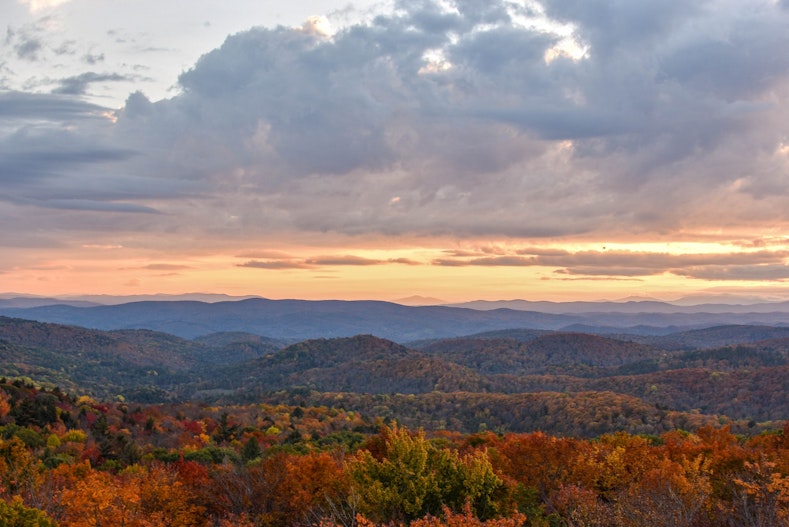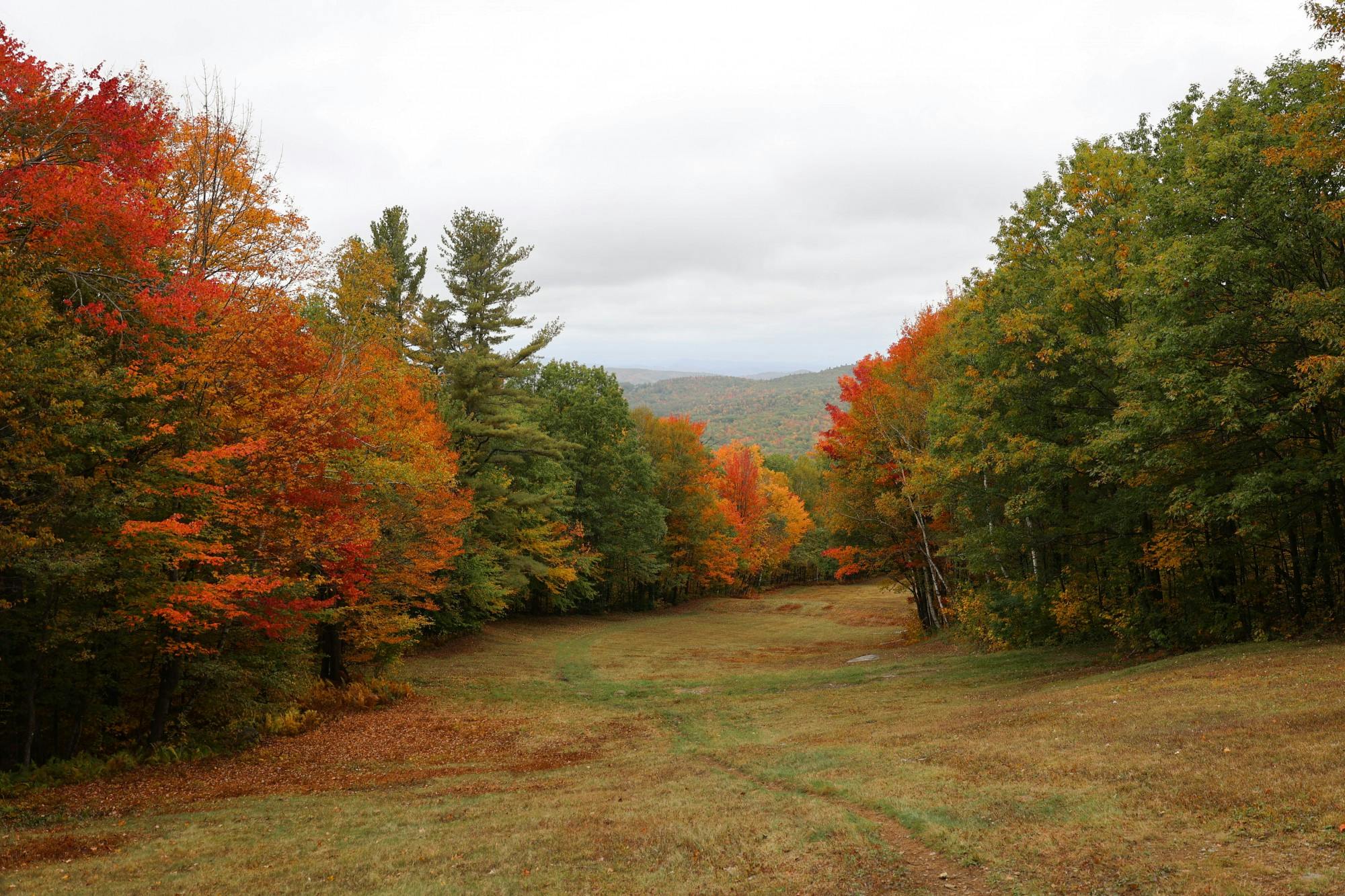Leaf-peeping is in full swing in the Upper Valley as tourists flock from across the country to see the vibrant array of reds, yellows and oranges the region’s leaves have to offer. This year’s leaf-peeping season comes after last year’s attracted fewer tourists than usual due to COVID-19.
According to the New Hampshire Travel and Tourism Department website, peak foliage in the Dartmouth-Lake Sunapee region is slated to occur between Oct. 17 and Oct. 23, with roughly 75% to 80% of leaves having already changed colors as of Oct. 12. The department estimates that 3.2 million tourists will visit New Hampshire this fall, bringing $1.4 billion in spending to the state.
Fatface clothing store manager Doran Brandt said that leaf-peepers tend to come to Hanover in regional bands at different times of the season.
“In the middle of September, [leaf-peepers] were mainly from the D.C area,” Brandt said. “Pretty recently, [they are] coming from your southern states — your Carolinas, Georgias, Floridas.”
Brandt noted that foliage tours have been particularly beneficial for Fatface, especially since local transit tends to drop passengers off right in front of the store.
Molly’s Restaurant & Bar manager Andrea Field also noted that the fall foliage is driving up business.
“Anywhere from October to November, [Molly’s] gets really busy because of leaf-peepers,” Field said. “People from far away [come] up here to visit. It’s crazy.”

The leaves have begun changing colors at Mount Kearsarge.
According to biological sciences professor Caitlin Hicks Pries, leaves get their green color from the chlorophyll pigment. However, leading up to the winter, plants enter a dormant state in which chlorophyll is reabsorbed and leaves become yellow and orange. These vibrant colors are always present, but are typically overshadowed by chlorophyll, she added.
Additionally, some plants like sugar maples produce another pigment called anthocyanin that yields a vivid red color, Hicks Pries said.
She noted the effects of climate change on fall foliage, explaining that leaf-peeping season may be both prolonged and delayed in the near future.
“There’s also an indication that the period of time at which the leaves are colored before they drop might be increasing,” Hicks Pries said. “With climate change, we might actually see increased periods of fall color.”
Describing Hanover as a “quaint, pretty town surrounded by mountains,” Indigo clothing store owner Mia Vogt acknowledged the draw to the Upper Valley that the foliage creates and noted the different energy the peepers bring to town.
“It’s good for business to have people come into town,” Vogt said. “They are relaxed generally because they are on vacation… a little older, retired.”
The foliage has attracted more than just visitors — it has also garnered the attention of many students, including Anne Guidera ’25, who took advantage of the scenery and hiked Gile Mountain with a few friends.
“[The foliage] brings [students] together in the outdoors,” Guidera said. “[Students] do all the DOC trips or just go with their friends and go outdoors and enjoy nature together.”

Many students have taken part in trips to Gile Mountain to enjoy the views.
Alex Wells ’22, a trip leader in the Cabin and Trail subclub, noted that one sunrise hike — or “sunrike” — on Gile Mountain at 6 a.m. had over 100 sign-ups, which he described as “wild.”
The fall foliage, coupled with fewer DOC outings taking place during the pandemic, has prompted a surge in student demand for trips this year, Wells said. He noted that in addition to the increased sign-ups, fewer students are relinquishing their spots on trips this year.
According to Wells, this skyrocketing demand, coupled with the influx of tourists, has prompted him to carefully select trips based on their wait times.
“I am constantly thinking about what hikes it makes sense to lead… because I don't want to run into a massive crowd at the trail heads… particularly with the foliage,” Wells said.
But Wells added that Cabin and Trail is still looking to lead as many hiking trips as possible, especially for first-year students who are experiencing the outdoors in the Upper Valley for the first time.
“Since the start of this term, most leaders have been taking as many trips out as they have the capacity to do in their schedule,” Wells said. “I think especially this year in particular, we are especially excited to be getting outside again, in what feels like a pretty normal way.”




